We eat our cereal, we walk the 5 miles a day our trainer or doctor told us to, eat our salmon and arugula and, at the end of the day, are convinced that we’re living a healthy lifestyle.
On the other hand, when it comes to sleep, we’re short thinkers and it all comes down do getting those 6 or 7 hours.
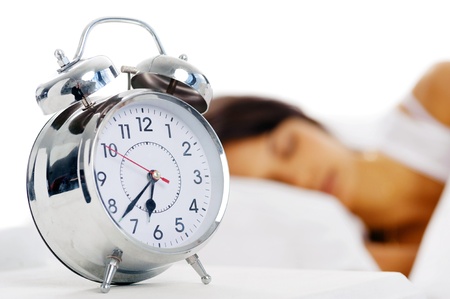
Why the 7 hours can’t be called “healthy sleeping habits”
It sounds counterintuitive, but sleep is more intricate than other aspects of a healthy lifestyle. Just scratch the surface by doing some basic internet searches like “why do we sleep” and you’ll realize that even science is yet to fully understand the intricacies of sleep. As a health-conscious person, we should work with what we have and what we know and that must go beyond the numbers on the clock.
Today, we’ll do just that, we’ll take an in-depth look into one common energy-pilfering sleep issue. If you are sleeping enough and still waking up tired and need two cups of coffee before you can “attack” your daily challenges, you’re just the kind of person that should keep reading.

Waking up tired; image source: stockimages.com
Sleep phases and cycles
The problem that we are talking about today is sleeping (or not) in full sleep cycles and getting enough of deep sleep. When we sleep, our bodies go through a few sleep phases. Each phase plays a vital role in how well our bodies recover from the stress we put them through every single day.
Basics of sleep phases
Two basic sleep phases that you’ve probably heard about before and non-REM (quiet sleep) and REM or Rapid Eye Movement phase. Before getting to the quiet sleep phase, our brain goes through what is known as relaxed wakefulness – it lowers the numbers of signals the neurons fire off and increasingly ignores the outside stimuli.
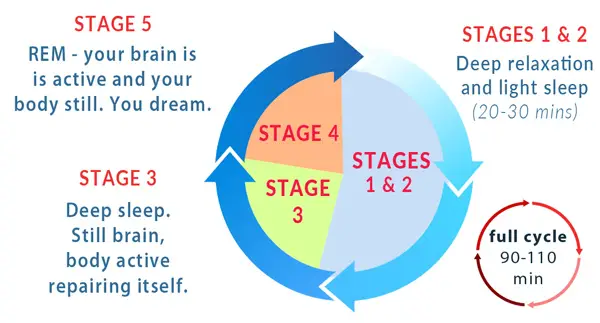
Non-REM and deep sleep – when all the magic happens
In non-REM sleep, our muscles relax and the body temperature drops as our brain moves through light sleep to the critically important deep sleep.
It’s when our body is in full swing, repairing the damaged tissues, shedding and replacing the dead cells, building muscle and renewing bone marrow. Most importantly, it’s when our body “resets” the immune system and deals with anything that it recognizes as a potential threat.
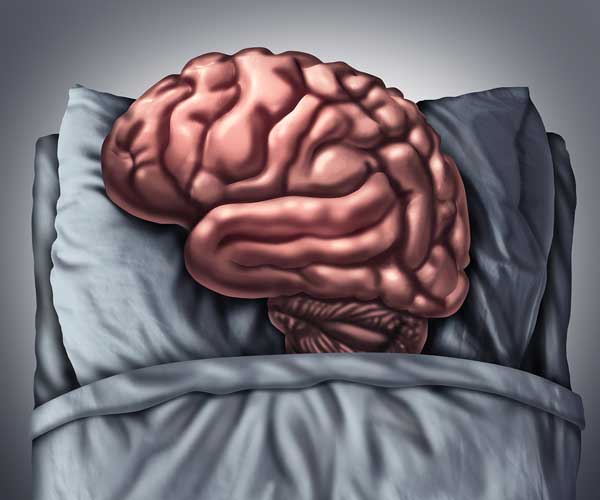
This is Deep sleep.
If you are not getting enough deep sleep, you’re not sleeping well.
You’ll remember we said that sleep is much more intricate than dieting or exercise. Think about that for a second – if you get a serving of avocado you know that you just gave your body a healthy oomph of vitamins and minerals, there’s no two ways about it.
But how do you know if you are getting enough deep sleep?
This is the million dollar question. Without going to a sleep clinic, you can’t be sure what happens with your body and mind during those 7 or 8 hours. The alternative, not as precise and as reliable, could be a sleep monitor. These are small, inexpensive gadgets that can point you in the right direction.
Empirically speaking, if you are getting the hours and still feel tired, there is probably an underlying issue that can be tracked back to your sleep patterns.
What to do about it – re-designing your sleep routine
If you do arrive to the conclusion that there’s something off with your sleep patterns, getting back on track is a process not to be taken lightly. It calls for a carefully crafted plan and a few serious lifestyle changes.
1. Misconceptions about caffeine
You’ll hear people say that caffeine either doesn’t affect their sleep or even deluded things like, “it has no effect on me, it actually helps me sleep.” That’s NEVER true. Even if it has no effect on the time you spend sleeping, it has a profound effect on the balance between the sleep phases.

The problem
The half-life of caffeine is 6 to 8 hours – this means that a double espresso at 3 PM equals a regular cup at 9 or 10 PM. This is the part that most people most people don’t know about or chose to ignore.
The solution
A caffeine curfew – if you can’t give up caffeine which, let’s face it, most of us can’t, make a decision to enjoy it in the morning and don’t have any after 12 PM. This will give your body enough time to process and get rid of most of the it before you go to bed.
2. Sleep and digestion
What?
What does my gut has to do with the quality of sleep I get? The answer is, “Everything.”
The quality of sleep and balance between the sleep phases is regulated by a hormone called Melatonin which is secreted by the pineal gland. But here’s the true shocker – recent studies have shown that our gut carries a shocking 400 times more Melatonin than the Pineal gland.

Well, this can only mean one thing – the hormone is stored in the intestines, right? Not really.
The same studies showed that if the pineal gland is removed, levels of Melatonin in the intestines do not change. The conclusion is that out gut actually produces the hormone and its building block, Serotonin.
The problem
Simply put – if your digestion is not in the best shape, you will not be getting enough of the precious sleep-regulating hormone.
The solution
The solution is pretty simple and if you are a health zealot, you are probably doing most of the things we’ll mention here.
Two main principles of regulating Melatonin production in the intestines are minimizing foods rich in chemicals that are “confusing” for our digestive system and eating more foods rich in sleep-promoting nutrients.

Healthy food; image source: stockimages.com
The chemicals mentioned here are the ones that you’d want to stay away even if sleep is not your problem. They include preservatives and additives, chlorinated water, highly processed foods and antibiotics.
Foods rich in nutrients that promote balanced sleep are also the ones that you generally want to have on your menu.
Sleep-promoting nutrients: Magnesium, Selenium, Potassium, Tryptophan, Omega 3, Probiotics and Prebiotics and vitamins C, D and B6.
Generally speaking, you’ll cover all the bases if your diet is rich in these foods:
- Healthy meats: organic chicken and turkey
- Healthy fish: sardines, salmon, halibut and mackerel
- Leafy greens and organic veggies
- Seeds: sesame, pumpkin, chia, hemp and flax
- Oils: krill, olive and flax
- Chosen fruits: bananas, avocado, kiwi, tangerines and apples
- Nuts: almonds and walnuts
- Probiotics and Prebiotics: yogurt, miso, kimchi, kombucha and pickles.
The list might seem like commonplace, but it is in fact, a checklist of hand-picked foods rich in all the sleep-promoting nutrients we mentioned.
3. Turn your bedroom into an oasis
No matter how busy you are or how many kids you have, you should have one room in your house that will be your relaxation oasis, your tranquil sanctuary. The “me-room” should be your bedroom. Below are a few tips on how to do that with very little effort and cost.
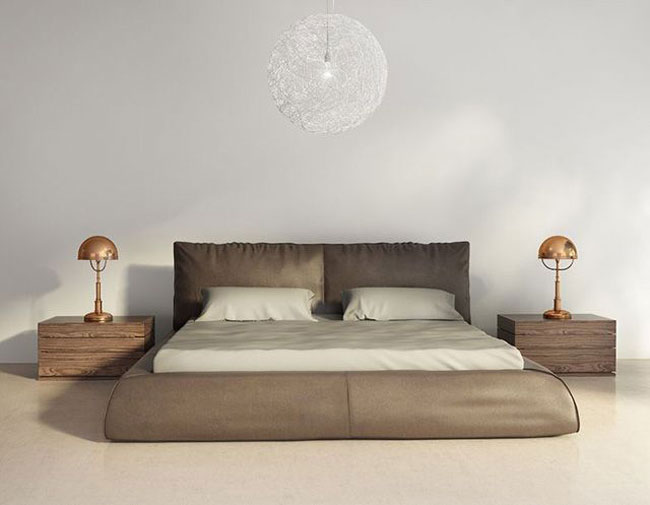
Minimal bedroom design; image source: stockimages.com
Go minimal
When you go over the doorstep of your bedroom, it should feel like you are closing a heavy iron door of the hectic life behind you. That’s not happening in a cluttered space.
Ideally, your bedroom should have no more than 4-5 pieces of furniture in it: a bed, a night table, a dimmed night light and one or two chairs that don’t dominate the room – that role belongs to your bed. If you are thinking, “I don’t have the space for all the stuff…”, we feel your pain, and the way to make an acceptable compromise is one cupboard and a bed with a storage drawer.
The important thing is that none of these things is “in your face” as you walk in.
Creating a focal point
This one ties into the decluttering talk above. The focal point that dominates the room MUST be your bed. After all, it is called a BED-room. Even if your bed is not luxurious and dominant, you can still make it a focal point by having an accent behind it. The accent wall should be a few shades darker tint than the other walls. This will create depth and a magnetic-like effect to that part of the room.
Get comfortable with the blues
If you were asked right now what color should a bedroom wall be, your answer would likely be something along the lines of “calming earth tones”. That’s natural because all the magazine articles we’ve ever read on the topic suggest it.
The truth supported by science is a bit different.
The wall color of the rooms where people get the best sleep is blue.
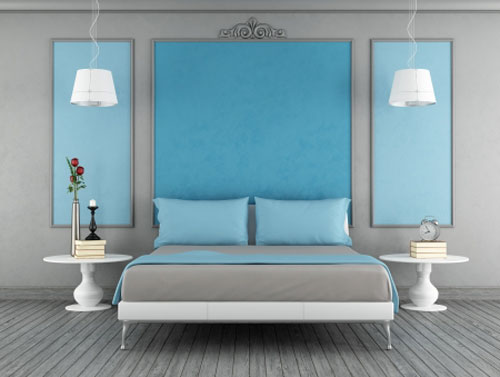
This is what research based on a large sample of rooms in a chain of hotels in the UK found. People who sleep in rooms painted with gentle hues of blue get the most sleep (the average is 7 hours and 52 min).
Below is table representing the results of the research, listing the bedroom colors from “best” to “worst” based on how much sleep people get.

To summarize
An average person will sleep for 9,125 days in their life, that’s 25 years.
Pretty much all other parts of our lives are profoundly affected by how well we sleep. If there’s one aspect that should not and must not be sacrificed on the altar of our hectic lives, it’s our sleep. It’s what keeps us going.
The sooner we awaken to the importance of proper sleep, the better off we’ll be.
Sweet dreams.








































